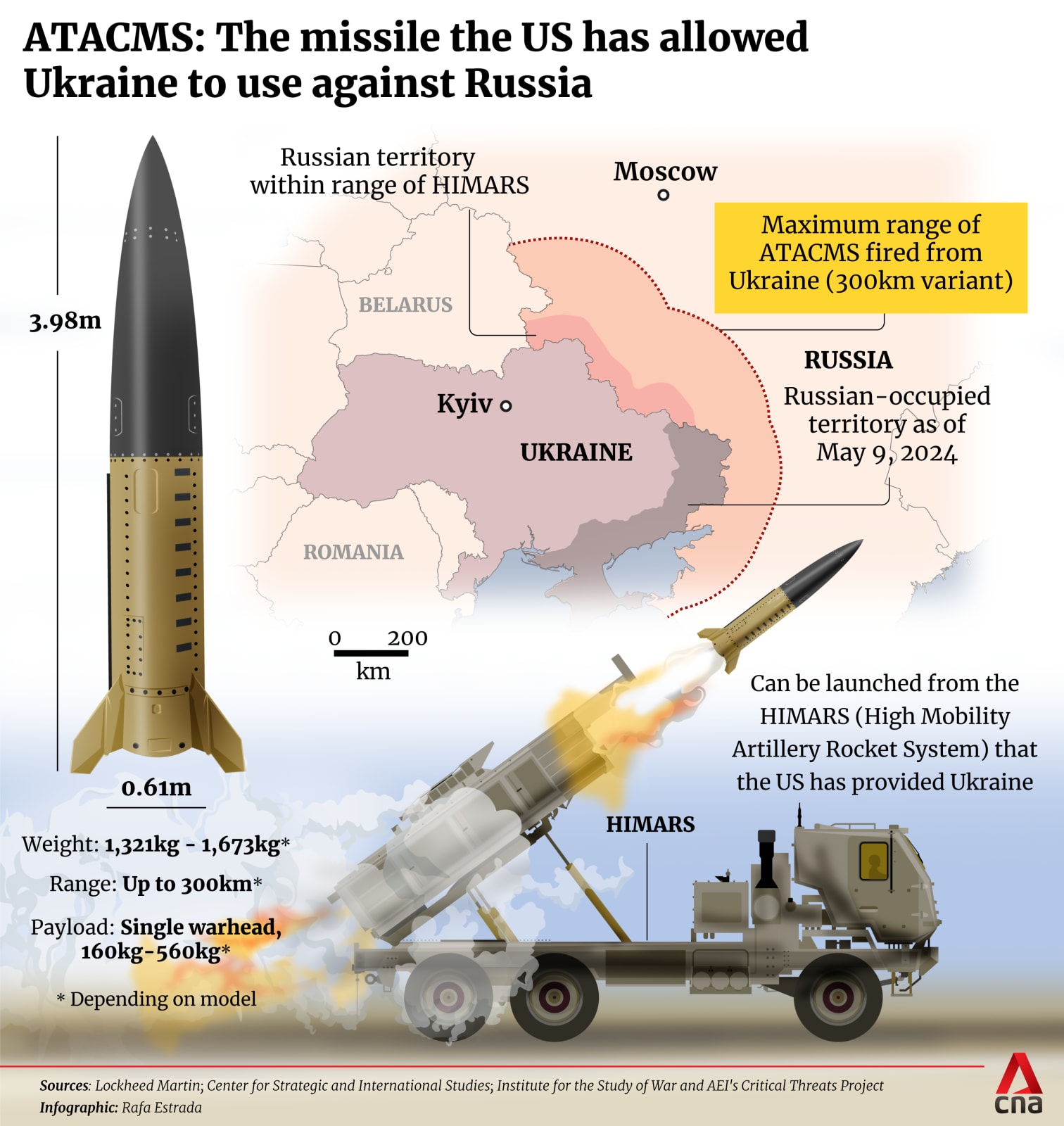Snap Insight: Ukraine’s first strike with US long-range missiles is an astute way of testing Russia
President Vladimir Putin may have lowered his threshold for a nuclear strike, but he is unlikely to respond in this way to Ukraine’s first ballistic missile attack inside Russia, says international security expert Stefan Wolff.


This audio is generated by an AI tool.
BIRMINGHAM: It took Ukraine barely two days after United States President Joe Biden relaxed restrictions on the use of US-made ballistic missiles to strike.
According to Russian reports, six ATACMS missiles were deployed by Ukraine on Tuesday (Nov 19) into the Bryansk region and destroyed by Russian air defences, alongside a large number of drones that were part of the attack. Ukrainian and Western reports, by contrast, note about a dozen secondary explosions at the target site.
While it may take some time to get details verified, the Ukrainian strike gives some indication of what Kyiv is planning to do with Biden’s permission to strike inside Russia.
LIMITED STOCK OF ATACMS MISSILES
The range of the missiles available to Ukraine is around 300km inside Russia. This is common enough knowledge that Russia will have moved some of its critical capabilities beyond their reach – and done so probably well before Biden’s decision.

That Ukraine targeted facilities in the Bryansk region – west of the embattled Kursk region and in the trilateral border area with Belarus – might be an indication that there are few other worthwhile targets closer to the frontlines.
The use of just six ballistic missiles, albeit in combination with a large number of drones, might be an indication that Ukraine, for now at least, has relatively limited stock of these missiles and cannot commit them in large numbers to individual strikes.
This, of course might change in the coming weeks, including if other countries, like the United Kingdom, France and Germany, give permission for their weapons to be used in a similar way.
TESTING RUSSIA’S REACTION
Ukraine’s first strike and its limited scope are likely also an astute way of testing Russia’s reaction.
President Vladimir Putin signed off yet another update to Russia’s nuclear strategy earlier on Tuesday, lowering the threshold for a nuclear strike. The new policy says any conventional assault on Russia by a non-nuclear power supported by a nuclear power will be considered to be a joint attack.
But it is not exactly clear what this means in terms of a Russian response.
Will Russia now carry out strikes on US territory or target US forces in Europe or the Middle East? Will Russia deploy tactical nuclear weapons now on the battlefield in Ukraine?
Given that the Ukrainian attack, according to Russian reports, caused no damage, this is highly unlikely.
THE RIGHT AMOUNT OF PRESSURE TO AVOID RETALIATION
If Ukraine plays its hand carefully, the ATACMS strike could be part of a very gradual escalation that puts Russian forces under significant pressure while avoiding the headline-grabbing massive attack that would invite disproportionate retaliation.
This would make what the revised nuclear doctrine envisages less justifiable and therefore less likely.
Putin might face few restraints inside Russia, but using nuclear weapons against Ukraine is a huge threshold to cross. It would not be popular with China or other countries that have been supportive, or at least tolerant, of Russia’s war against Ukraine, such as India, Brazil or South Africa.
The threshold would be even higher, and the consequences catastrophic, if Putin were to attack a NATO member.
The coming days and weeks will give us a better sense of how Ukraine’s improved options will affect the situation on the battlefields in the Donbas region and around Kursk.
If Ukraine were to achieve a stabilisation of the current frontlines and even be able to regain some lost territory, prospects for a Trump-brokered ceasefire would improve – and with it the likelihood that it would hold.
Stefan Wolff is Professor of International Security at the University of Birmingham and Head of the Department of Political Science and International Studies.


















